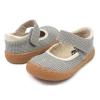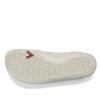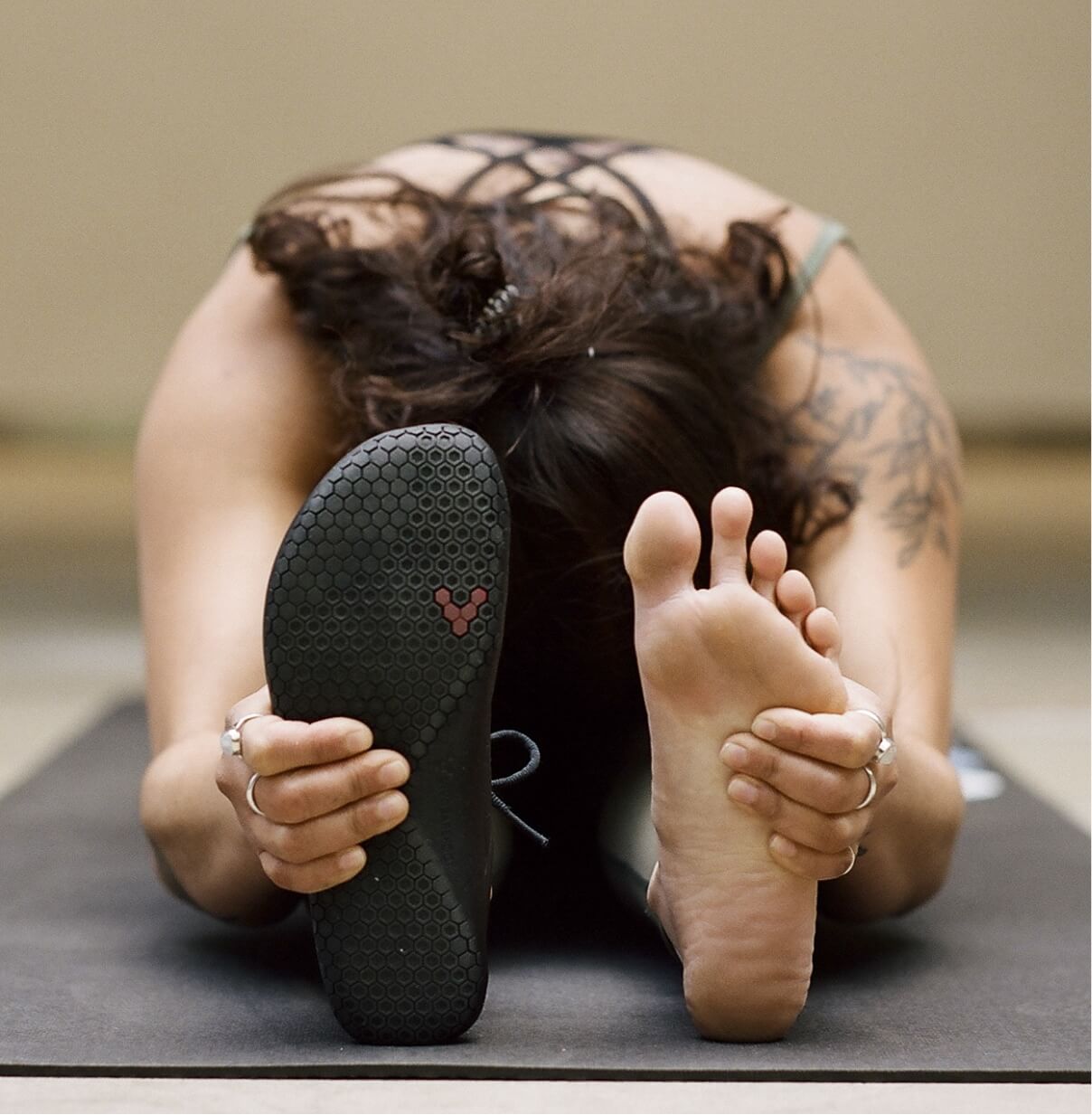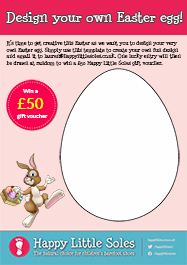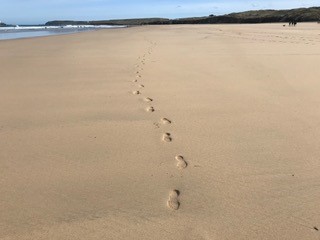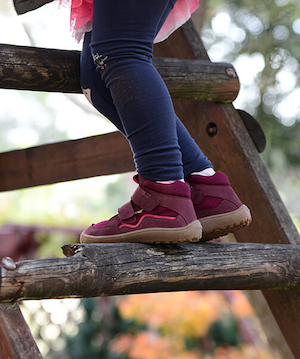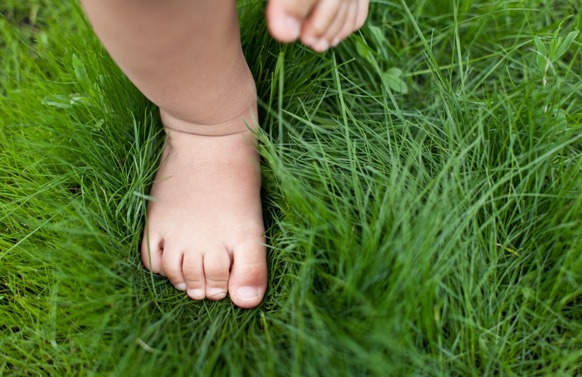
Did you know there are 26 bones, 19 muscles, 107 ligaments plus an array of delicate blood vessels, nerves and tissue fibres all working together to control the movement of each foot.
Bones start out as cartilage and it isn’t until the child reaches about 18years old that all of the constituent parts of the foot are fully developed. So it is vital, especially in the first few years of walking, but ideally until 18, that the child’s foot is not subjected to ill fitting, rigid or inappropriate shoes.
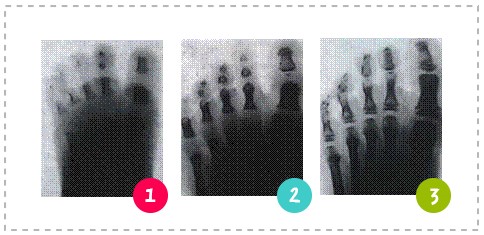
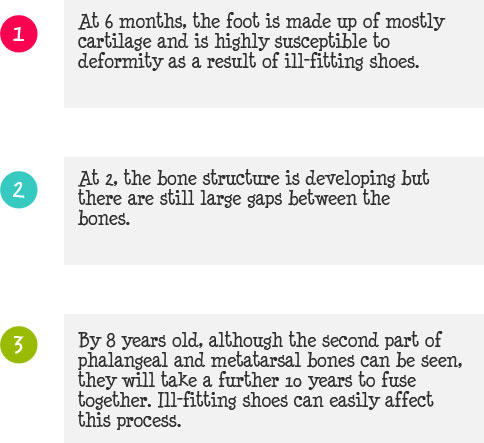
Medical experts worldwide agree that barefoot walking is not only the best thing for healthy foot development but also for general health. In fact, in countries where barefoot walking is normal, there are hardly any problems with knee, hip or back joints later in life.
The picture below shows a barefoot child, engrossed in her play, managing to balance perfectly well on a log. Here, by allowing her toes to perform their natural gripping action, her feet are naturally developing strength and coordination. Had she been wearing shoes, this natural development would have been compromised, meaning she would have had to adjust her bodily alignment to compensate, putting undue pressure on her spine and other major bone groups.
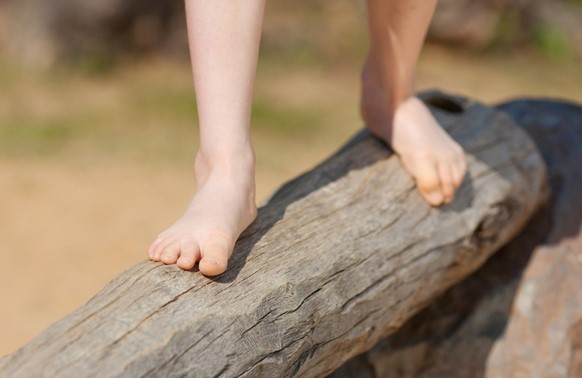
Barefoot might be best but it’s not always practical. When walking outside or on rough surfaces, tender skin needs protection from sharp objects and extreme weather conditions. Shoes should be as close to barefoot as possible.
So what is important in a barefoot shoe?
Flexible soles allow the foot and ankle to develop most naturally by enabling the foot to respond to changes in the walking environment and to make appropriate adaptations. They are recommended by podiatrists because they offer protection without being restrictive. When choosing a shoe, you should be at least able to bend the toe of the shoe up easily to help develop the immature muscles of the foot.
A foot has 250,000 sweat glands, with the potential to create a quarter of a pint of perspiration every day! Inners should be made of natural materials such as leather with uppers of leather or canvas rather than plastic or imitation leather. Breathable shoes will encourage good foot hygiene and prevent conditions such as athlete’s foot.
Shoes should not be heavy or impede the child’s movement in any way. Toddlers have enough of a hard time putting one bare foot in front of the other. The weight of a shoe, especially a heavy one, makes this task even more challenging. Heavy shoes can lead to a lack of confidence in agility, tired legs or worse with possible misalignment of the spine as children hold a different posture to overcompensate for the weight of the shoe they’re carrying.
Children’s feet are not just a scaled down version of adult’s feet. They have a particular shape, rather like a triangle, and need shoes to reflect this. Good toddler shoes require a correspondingly much bigger toe area than the shape of an adult shoe. Many shoe manufacturers of children's shoes are simply scaled down versions of adult shoes. Wide toe boxes enable the child to wriggle their toes freely and importantly, allow their toes to spread without constriction as they grip the ground to walk. Not only should the toe box be wide, but the opening to the shoe should also be wide enough to enable the foot to slip in easily, without having to squeeze the toes in any way.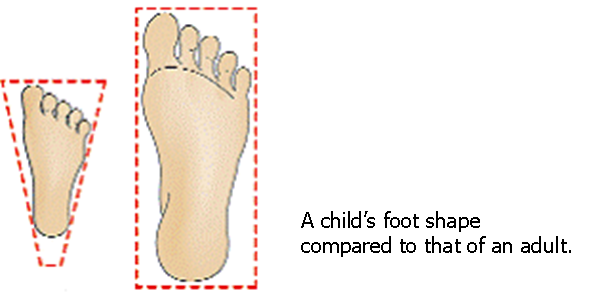
As shoes should only really be worn outside and in harsh environments, you need to make sure they will stand up to the elements. It is worth noting, however, that normal leather shoes are not 100% waterproof. Leather, in order to be breathable, is also permeable and can let water in. All of our shoes have been tested to withstand outdoor play but if you need a bit more protection, why not consider an overbootie like Stonz.
Soling material for outdoor shoes on hard surfaces such as playgrounds should be slip-resistant, shock absorbing and flexible. The best inner soles are protective while simulating barefoot conditions, meaning no heels, arch supports or other "moulding" features. Look for light rubber soles with grooves for traction or leather or suede soles with rubber padding in just the right places to provide greater durability.
 Free UK Returns
Free UK Returns




